Title photo by Thomas J Astle (Possibly Zoosphaerium neptunus, Madagascar)
Giant Pill Millipedes (Sphaerotheriida) are found in Southern Africa, Madagascar, South and Southeast Asia, Australia and New Zealand. They like moist habitats in leaf litter on forest floors
They can roll into a ball if disturbed, smaller ones can be the size of a cherry, slightly larger ones can be golf ball. The largest which come from Madagasgar can be the size of an orange!
…crunchy on the outside with a soft chewy centre…
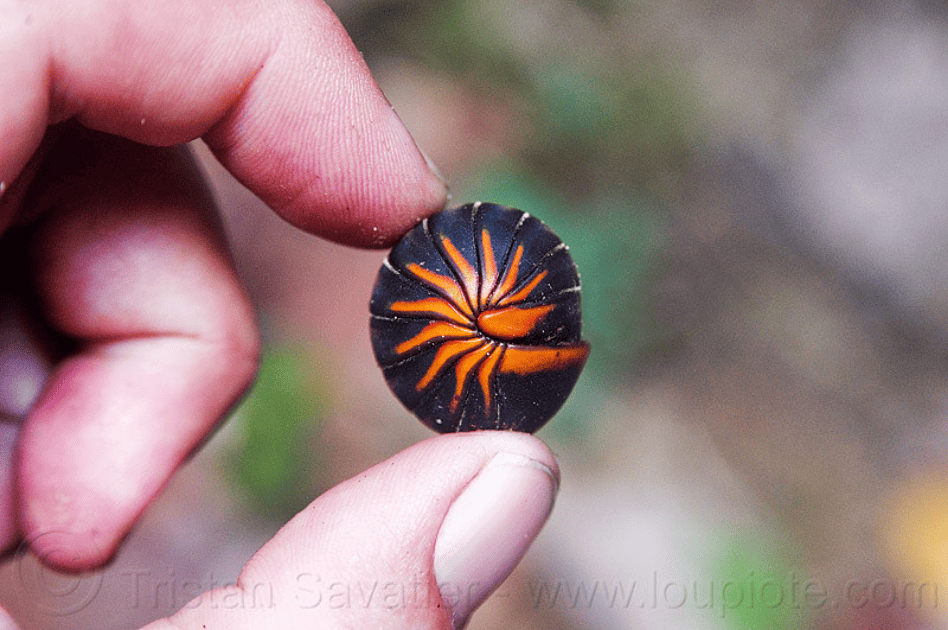
Borneo Giant Millipede, Photo by Tristan Savatier
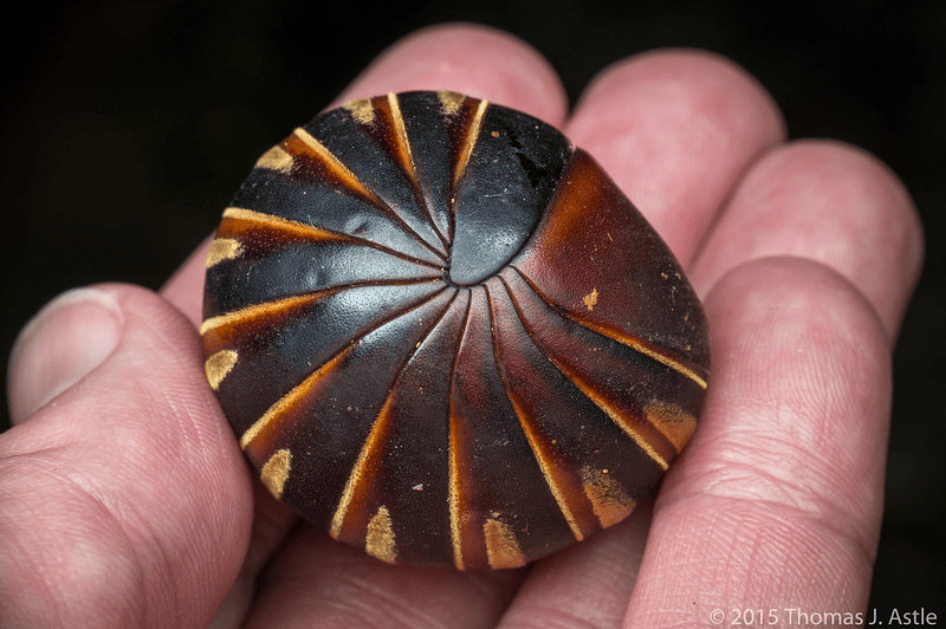
Sabah, Borneo, Photo by Thomas J Astle
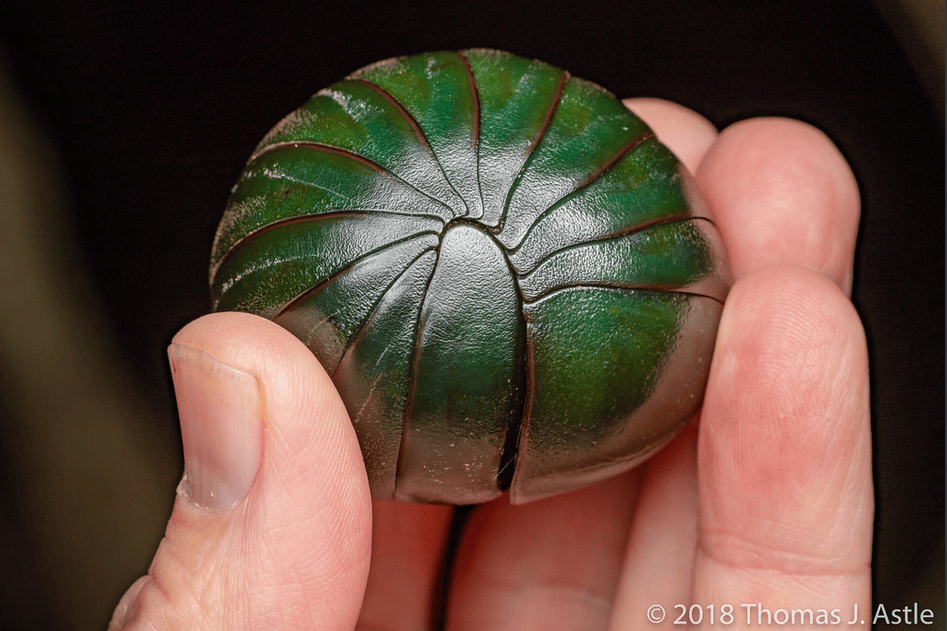
Possibly Zoosphaerium neptunus, Madagascar. Photo by Thomas J Astle
The Giant Millipedes first and last dorsal plate align perfectly with no gap, making a tightly sealed ball which most predators can’t open, however there are some including snails in South Africa which specialise in feeding on them. Also Meerkats and birds will hunt and eat them!
They are ground dwelling detritivores, and feed on dead organic matter, such as leaves and wood on the forest floor. They play an important role in decomposition helping to break down organic matter back into the soil!
A few Giant Millipedes can produce sound!
Sphaeromimus pill-millipedes live in the rainforests of southeastern Madagascar…Males have a structure on their anterior telopod, known as the harp, which has several ribs and is able to produce sounds. This stridulation organ is still not well understood, but may play a role during courtship. Source
The name for them in the local language [in Madagasgar] is ‘tainkintana’ which means ‘star droppings’!
Their antennae are very dexterous and mobile, and resemble elephant trunks as they probe their environment!

Sabah, Borneo, photo by Thomas J Astle
Their sex lives have 4 different phases…
The first phase is when a male detects a female, and orientates itself by positioning its anal shield towards the potential partner. Second, once the male is in contact with the female it starts to make stridulation sounds and vibrations. If the female recognises the male and is receptive, she will open up from her rolled-up position, or not roll up, and the male will then move below the female and grab her front legs with his telopods
The male then ejects sperm from his penises (he has one small penis at the base of each of the first pair of legs on the second segment), and transfers the sperm backwards along his legs and into the female opening which is on her second pair of legs. The two millipedes will then separate. After that, the female lays her eggs in the soil and covers them with a mud layer for protection. The eggs hatch into very small, pale pill-millipedes. Source
They are slow movers and are able to burrow into the soil and leaf litter. They also come in a nice variety of colours and patterning!
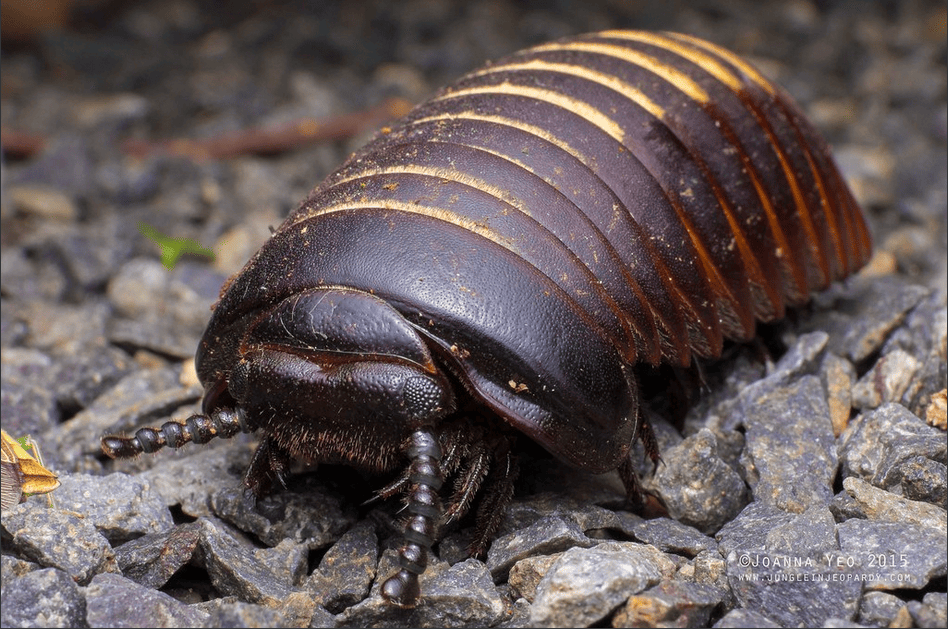
Photo by KancheongSpider
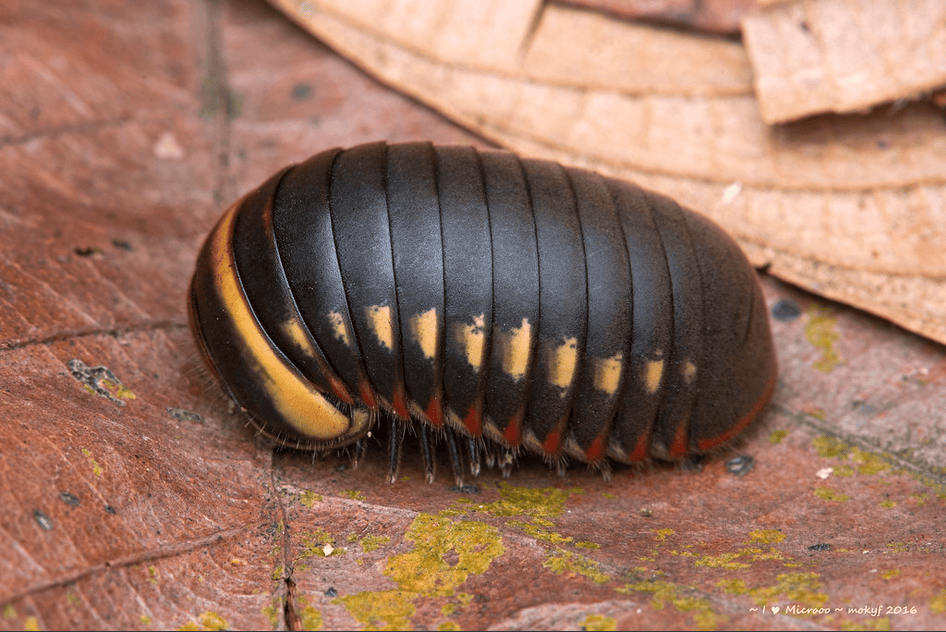
Photo by Mok Youn Fai
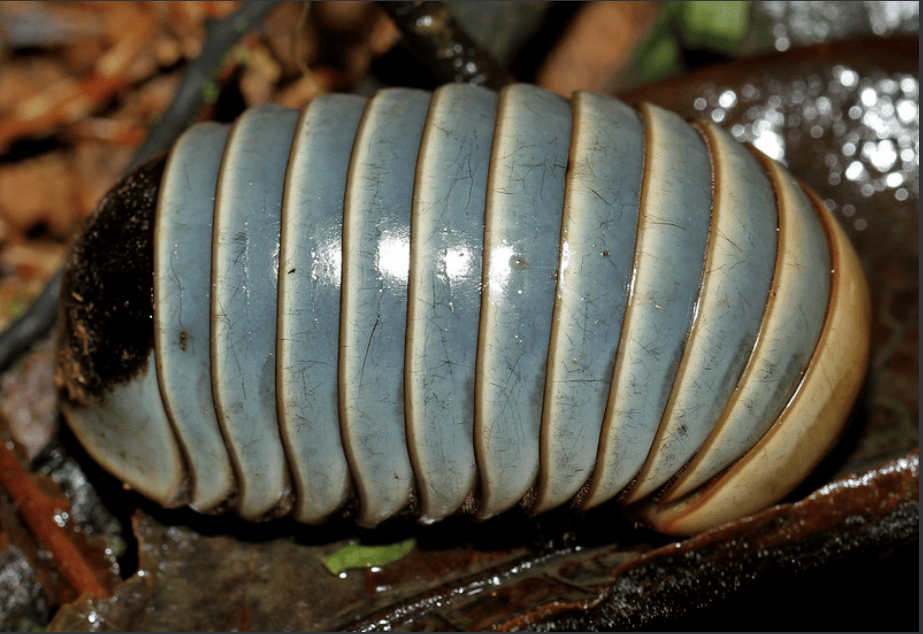
Agumbe Rainforest Research Station, Karnataka, India, photo by cowyeow
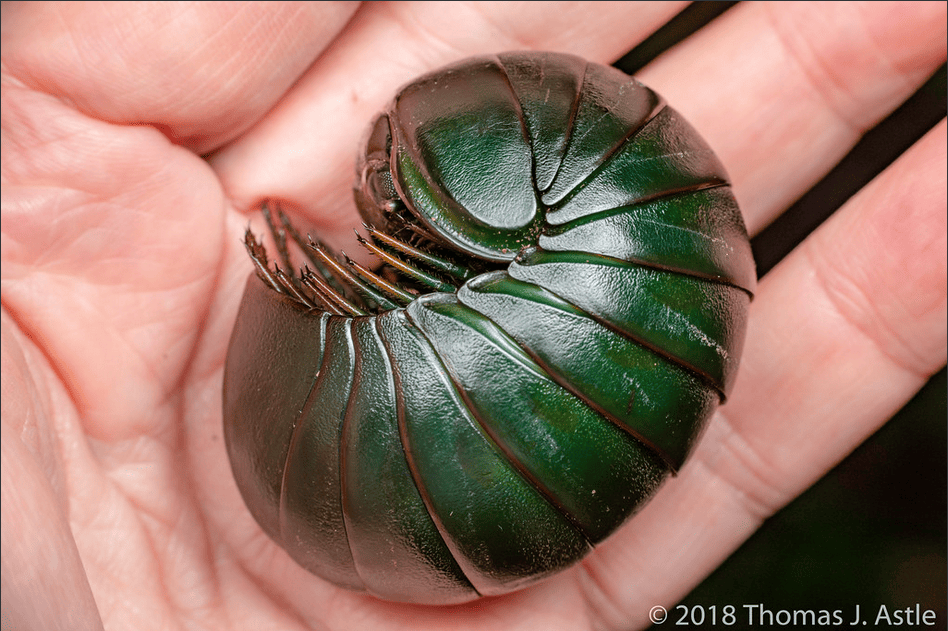
Possibly Zoosphaerium neptunus), Madagascar, photo by Thomas J Astle
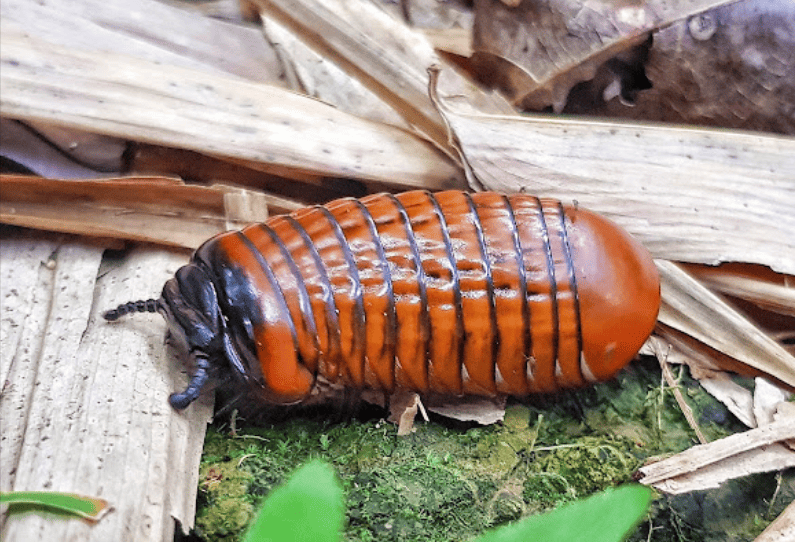
Bothrobelum rugosum, Bau, Sarawak, Malaysia, Photo by bob5
Adult females have 21 leg pairs (42 in total), while males have an additional 2 leg pairs, which are probably used to grasp onto the females during mating!

Zoosphaerium neptunus, photo by Nicky Bay
…draw me like one of your French girls…
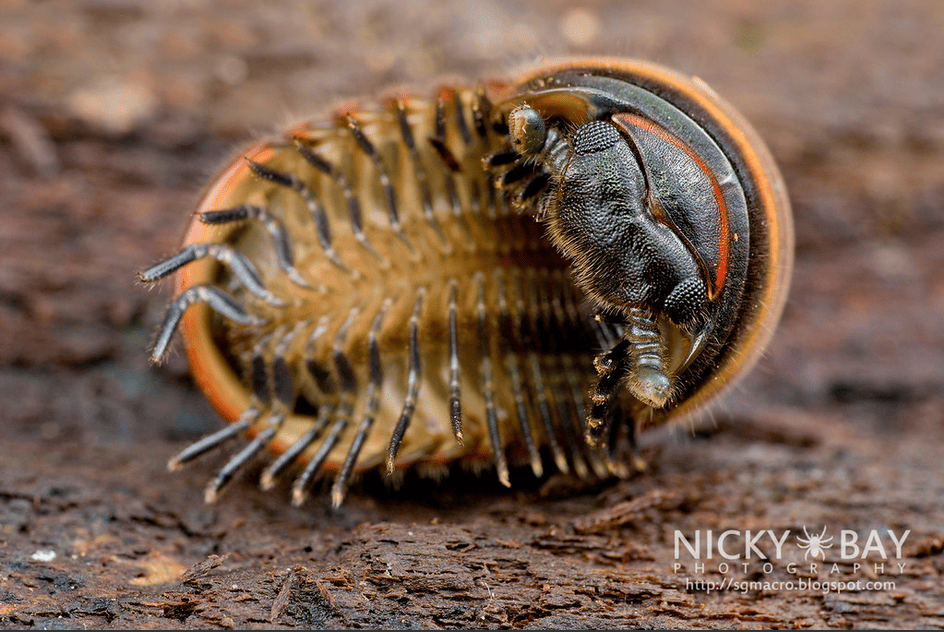
Zephroniidae, photo by Nicky Bay
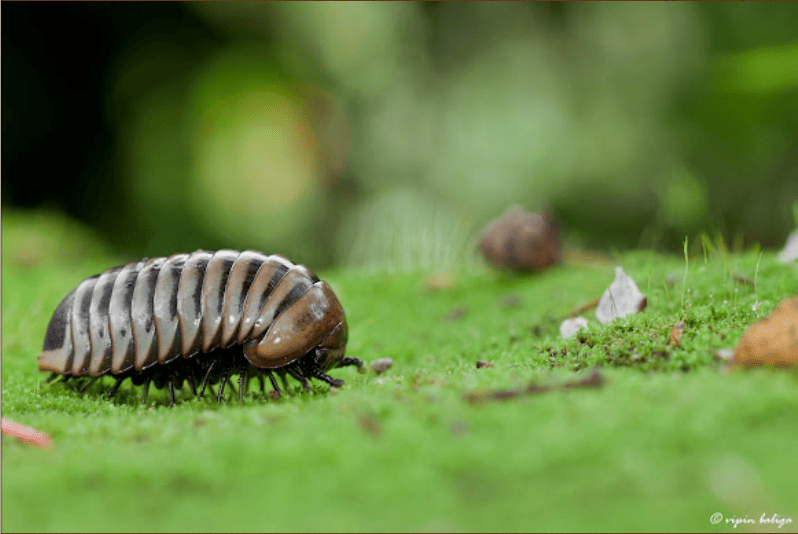
Sphaerotheriida, Karnataka, India, photo by vipin.baliga
All info via wikipedia and Scientific American unless otherwise stated
Also I’m not an expert, I just like sharing fun things and critters, any errors let me know in the comments and I’ll edit my post, cheers
The thumbnail picture is what I imagined the boil bugs from The Fifth Season look like under their carapace.
Oh man I want one. It’d be nuts to add it to my isopod terrarium
There are varieties that are suitable for vivariums etc and will get along well with other residents…also you now have to share some photos of your critters they’d make an excellent post!
This one can live in the human body, right?
Not according to what I’ve read, they like damp forest floors with plenty of organic matter, definitely not parasites in humans


